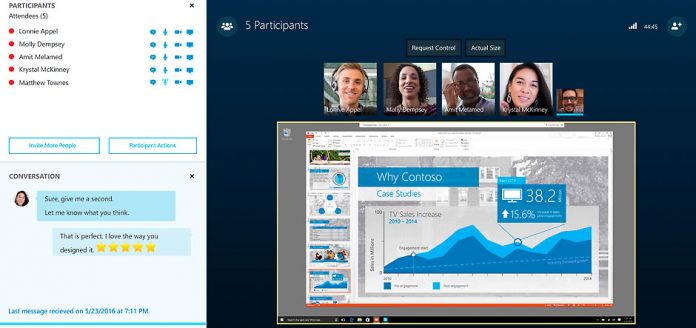There is an unexpected, but positive disconnect between IT and end-users on overall unified communications system adoption and satisfaction, with one quarter (25 percent) of end users saying they are ‘very satisfied’ with their organization’s UC system, compared to only 1 percent of IT respondents who believed satisfaction would be that high.
That’s according to a survey from Unify Square, The State of Unified Communications (UC) Adoption, which polled IT decision-makers and employees at organizations that have already deployed (or are pilot testing) a UC system.
While both groups agree that end-user adoption is IT’s greatest challenge to ensuring UC success, many IT organizations are not monitoring their UC systems or the end-users well enough to optimize usage. This is further proven by the fact that 70 percent of end-users claim they’ve never even been surveyed by IT on their UC system satisfaction. Lack of proper monitoring tools and visibility into the user experience are key contributors to this disparity.
“Deploying enterprise UC has turned into a case of IT perception versus end-user reality,” said Scott Gode, VP of product marketing at Unify Square. “If IT isn’t taking the pulse of both system and end-users on a regular basis, how are they supposed to effectively train end-users or spot issues? The silver lining is that end-users are enjoying their UC experience and want to continue with the platform. By not looking deeply enough into UC system health and user satisfaction, IT is acting as their own worst enemy. But lucky for them, visibility is easily attainable and can fast-track UC ROI.”
IT’s lack of UC system monitoring results in the following positive and negative disconnects between end-users and IT:
Usage and Satisfaction
High satisfaction ratings by end-users validates the significant productivity gains promised by UC – 80 percent of end-users believe their productivity has increased after UC was deployed, which is more than IT expected (72 percent). End-users are also exceeding IT’s expectations by integrating popular UC features into their day-to-day work. For instance, only 31% of IT respondents think video is used on a daily basis, but in reality, 42 percent of end users are indeed using video daily. Similarly, the use of IM and desktop sharing beat out IT’s estimates.
Training, or Lack Thereof
Nearly two-thirds (64 percent) of IT respondents state UC adoption programs and training have either high or very high importance in ensuring UC ROI. In fact, IT believes there are more UC training opportunities and resources available to end-users than end-users actually perceive – 35 percent of IT respondents said their organization offers instructor led training, whereas only 15 percent of end-users said they’re aware of this option. Over half of end-users (52 percent) claim their organization does not offer training or don’t know. Better awareness about these training programs could result in greater adoption and productivity.
Troubleshooting Tactics and Time to Resolution
Less than optimal training leads to inevitable technical issues. When end-users come across a UC problem, nearly half notify the IT Help Desk they need assistance, while 32 percent try to fix it themselves, 24 percent turn to alternative communication applications and 21% simply ignore the issue altogether. In sharp contrast, IT respondents believe that a majority (85 percent) of end-users will notify the Help Desk at the first sign of trouble and only 10 percent will try to fix it themselves. Once a UC issue is elevated, IT believes that nearly half (44 percent) of all Help Desk calls are resolved within four hours or less, whereas only about a quarter (24 percent) of end users experience quick resolution. Nearly a third of the users have no idea how long a resolution takes.
UC ROI Rests on Proactive System Monitoring
The inability to monitor quality is one of the top challenges (27 percent) stated by enterprise IT in managing their organization’s UC system. Ironically, given that need and focus, over two-thirds of IT simply try to go it alone without any additional software or services support to help monitor and manage their UC systems. Only 10 percent of enterprises leverage a third party partner, only 6 percent leverage a managed service, and only 4 percent have any sort of operations software. Additionally, 13 percent of all IT respondents have absolutely no “assistance” (software, services, etc.) to help with troubleshooting or analysis.
The survey was conducted at the Microsoft Ignite conference in late September of 2016 with over 150 respondents from mid-sized and large organizations. Respondents self-identified themselves as either IT (managing the corporate UC system) or end user (using the corporate UC system).
RELATED: BroadSoft Business Cloud UC Launches










